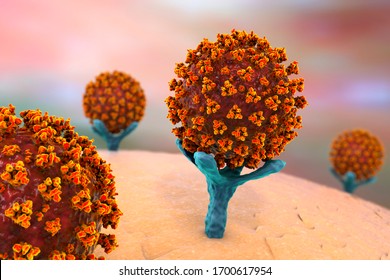In this blog, I want to discuss the Fucoidan and Covid-19, including the soon approaching Influenza season.
First, I will explain what a virus is. A virus is not a living thing, but it propagates, which means it spreads. The mechanism involves having the host cell creäte or synthesize the virus with the host cell’s help. Viruses have a much simpler structure than living organisms, so their synthesis time is short. Instead of multiplying by division like living organisms, it is completed by making virus components and packaging them. When one virus infects a host cell, as many as 1,000 offspring viruses are produced. For instance, the number of fast-growing influenza viruses reaches 10,000 in 24 hours.
For example, the virus growth mechanism is shown by taking coronavirus, which is one of the causes of colds. It is known that the host cell-side receptor for the new coronavirus is ACE2 (angiotensin-converting enzyme 2).
The cells in our body have a molecular mechanism that allows the new coronavirus to invade efficiently. The “ACE2” receptor is used as the “entrance” to cells, and the protein-degrading enzymes “TMPRSS2” and “FURIN.”
The virus first binds a superficial protruding spike protein to the ACE2 receptor in the host cell. The protein-degrading enzymes “TMPRSS2” and “FURIN” on the cell membrane cut the spiked protein at an appropriate position and help the virus and the cell. Thus, the virus can invade cells and inject genetic material (RNA), “factory” our cells, and allowing them to self-replicate in large numbers.

ACE2 is an essential receptor for regulating blood pressure making it one reason why hypertensive patients are more likely to become severely ill among COVID-19 patients. If the virus invades first, it can no longer serve its purpose.
According to “Sulfated polysaccharides effectively inhibit SARS-CoV-2 in vitro by Paul S. Kwon teal., their study results reveal that specific sulfated polysaccharides bind tightly to the SARS-CoV-2 S protein in vitro. This suggests that it acts as a decoy that interferes with S protein to the heparan sulfate co-receptor of the host tissue and may inhibit it. These polysaccharides have good antiviral activity in vitro. Due to its low cytotoxicity, it may have promising clinical applications.
Additionally, SARS-CoV-2 has been shown to infect a wide range of tissues with sufficient ACE2 levels, such as the nose and gastrointestinal tract. Possible delivery routes for these non-anticoagulant polysaccharide candidates, including Fucoidan (RPI-27, and RPI-28) and TriS-heparin, may be used nasal drops, metered-dose inhalers, or oral delivery. When taken orally, Fucoidan isolated from edible sulfated seaweed polysaccharides is considered “generally safe” and may give better results to patients admitted with COVID-19.
It is uncertain whether this is the result of heparin’s anticoagulant activity alone, or to some extent, its anti-SARS-CoV-2 activity. Inhaled heparin has additional benefits such as reducing lung coagulopathy and inflammation without causing systemic bleeding.
For this purpose, it is recommended to evaluate with Fucoidan, sprayed heparin, or perhaps TriS-heparin, with or without current antiviral therapy.
